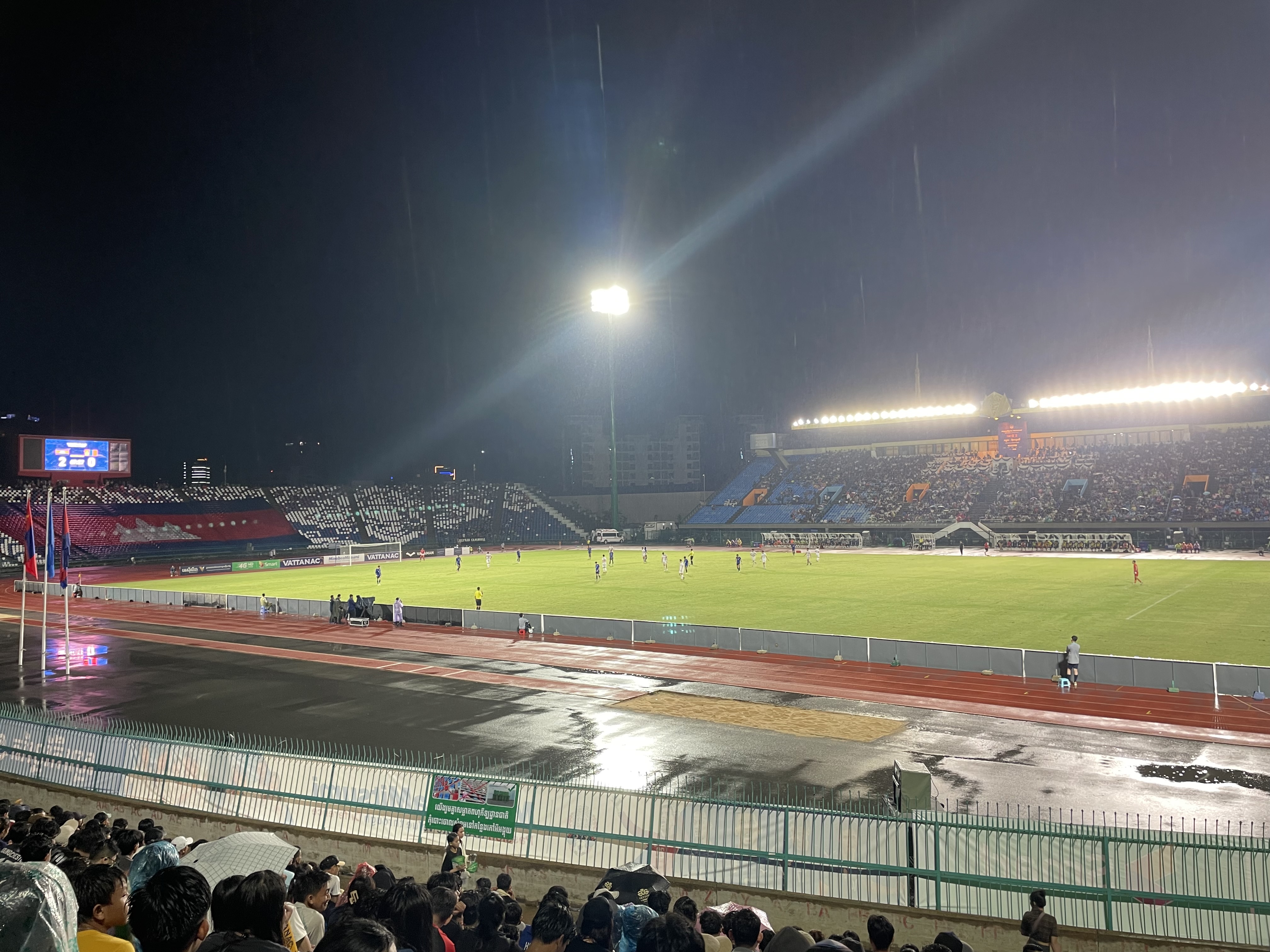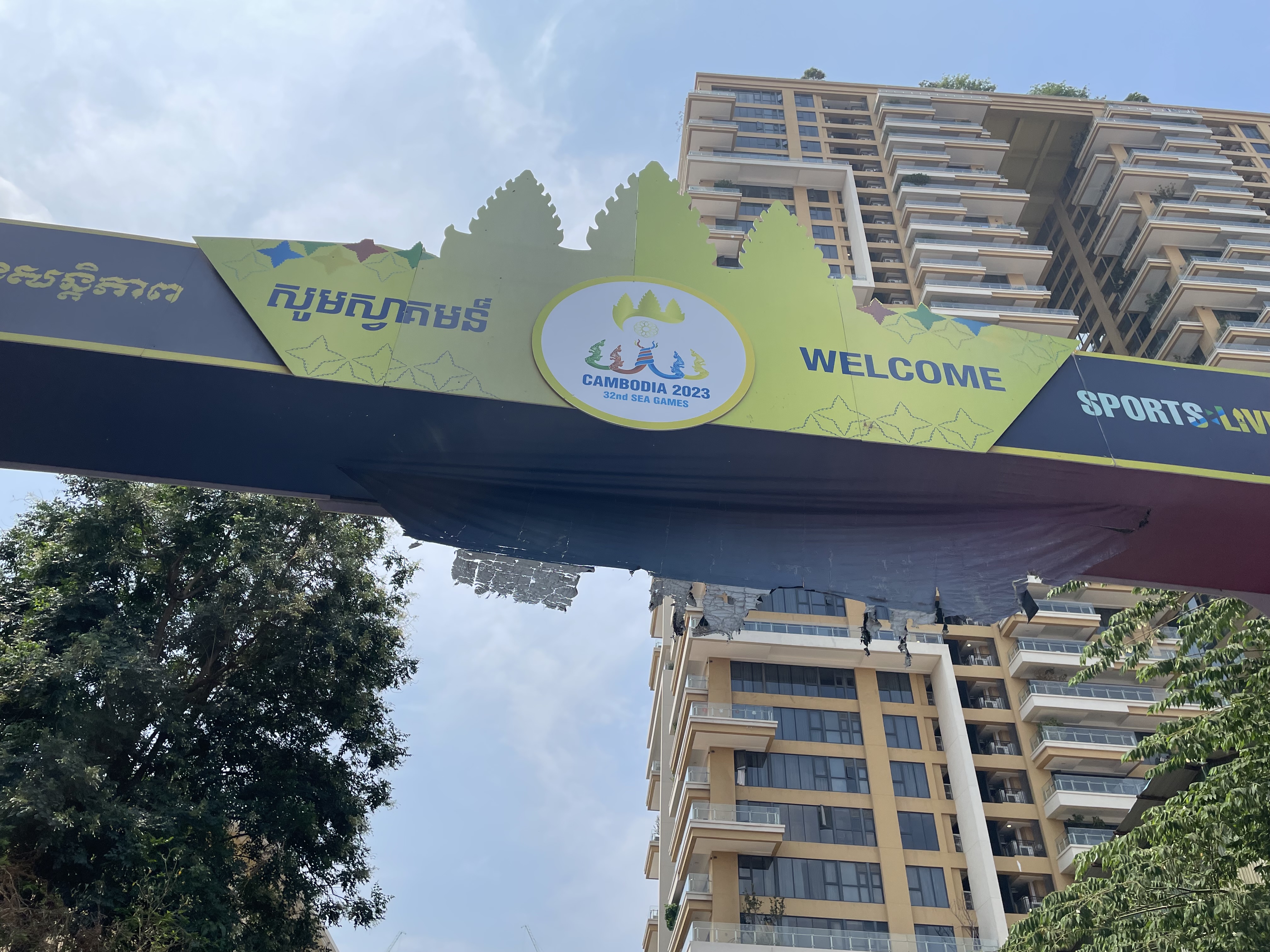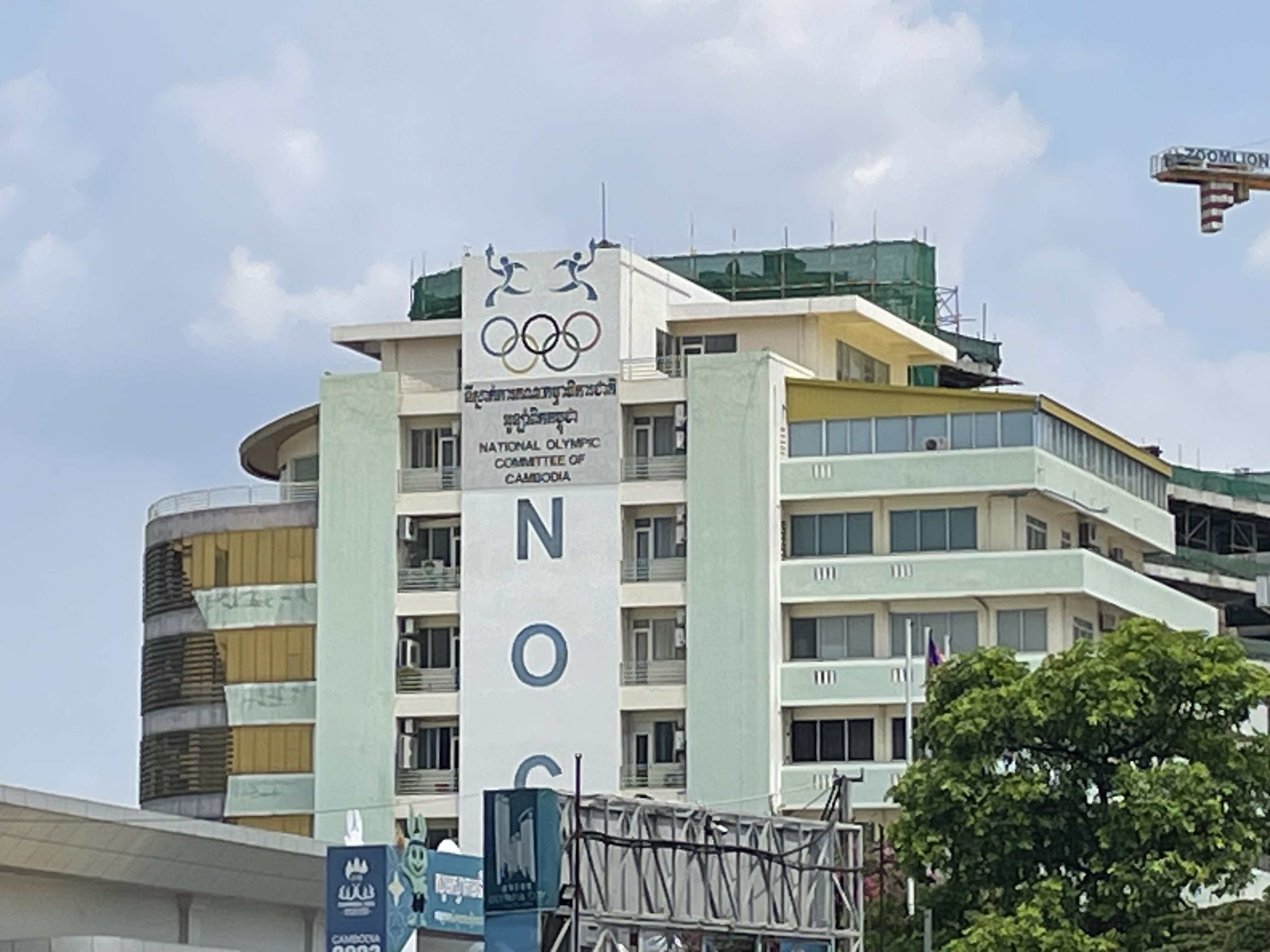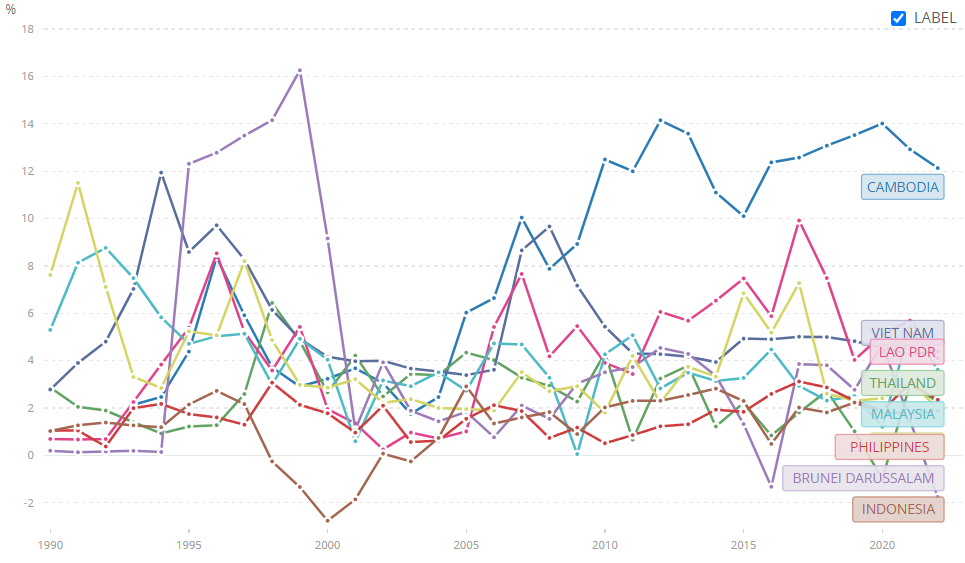Khmer Kicks: Football Finds Its Footing in the Kingdom of Cambodia
Rainy Evening Delight
I attended an international friendly soccer match held at the National Olympic Stadium in downtown Phnom Penh on Friday, June 7. The Cambodian crowd was energized from the start of the game even as a steady stream of rain poured down and the occasional streak of lightning appeared in the distance. Cambodia scored the opening goal around the twenty-minute mark, followed by a second goal in the thirtieth minute. The Cambodian fan section continued to pound the drums relentlessly until the final whistle. Cambodia ultimately triumphed over Mongolia with a 2-0 scoreline. This friendly was part of both teams' preparations for the upcoming Asian Cup Qualifiers.
The most popular sports in Cambodia are soccer, volleyball, and some types of traditional martial arts. Cambodia’s sports fans had even more reason to be excited when the nation hosted the Southeast Asian (SEA) Games in 2023. It was the first time that the country held the biennial multi-sport event. The Cambodian government showcased its ability to host large-scale international competitions by building new sports facilities in Phnom Penh.

Although the total number of Cambodian athletes that will participate in the upcoming Paris Olympics is not finalized, the nation eagerly anticipates the start of the games. I was able to observe some of the sporting pedigree of the nation as I was walked around the National Olympic Stadium. The office building for the National Olympic Committee of Cambodia is near the stadium. Encircling the stadium, a new constellation of high-rise apartments is steadily ascending, reshaping the Phnom Penh’s skyline.

Fear of Unlucky Number 4
Take an elevator in one of Phnom Penh’s newer apartment or office towers, and you are likely to notice something peculiar about the elevator control panel. Not only will the safety warnings be in a different language, but the number 4 is conspicuously absent. This omission is due to tetraphobia, the fear of the number 4, which is considered unlucky by many Chinese and some Cambodians because it sounds similar to the word for "death" in Mandarin. Since many of the elevators installed in Cambodia are manufactured in China, this superstition is imported along with the equipment. As a result, you might find the fourth floor labeled as 3A or see the floor numbering skip directly from 3 to 5, mirroring the practice of avoiding the number 13 in the United States. This phenomenon highlights the embedded influence that Chinese culture and foreign direct investment is beginning to have in Cambodia.
Net inflows of Foreign Direct Investment (FDI) into Cambodia equaled 11.5% of nation’s GDP in 2023. This is a significantly higher level than most of ASEAN member states. Additionally, the National Bank of Cambodia reported that China accounted for around 45% of FDI into Cambodia from 2015-2022. The World Bank estimates that around 33% of Cambodia’s imports of goods were sourced from China in 2021. Some of my research touches on Foreign Direct Investment in Cambodia, but I am presently unable to provide a particularized chronicle of the research in a public forum due to the intricate and sensitive nature of certain external factors.
